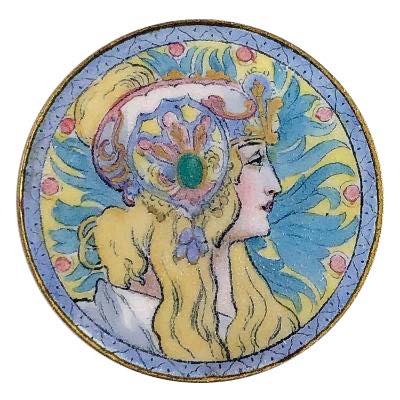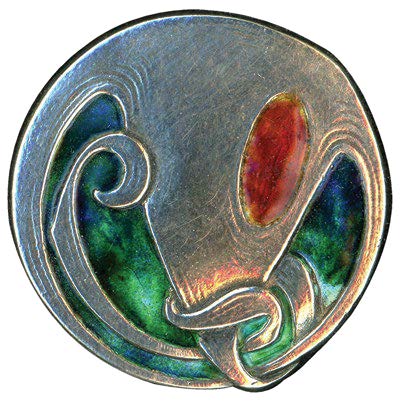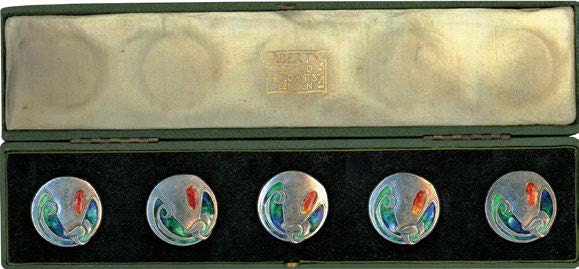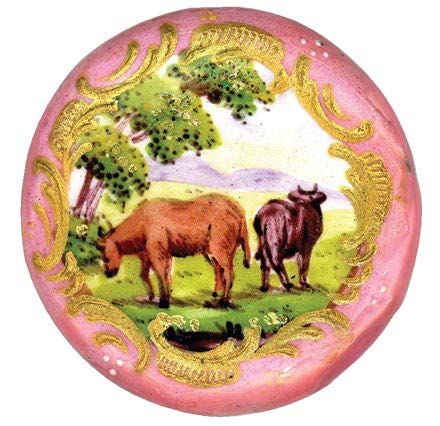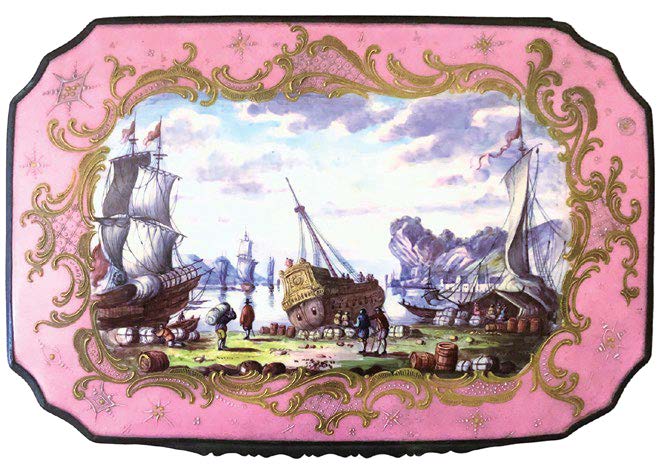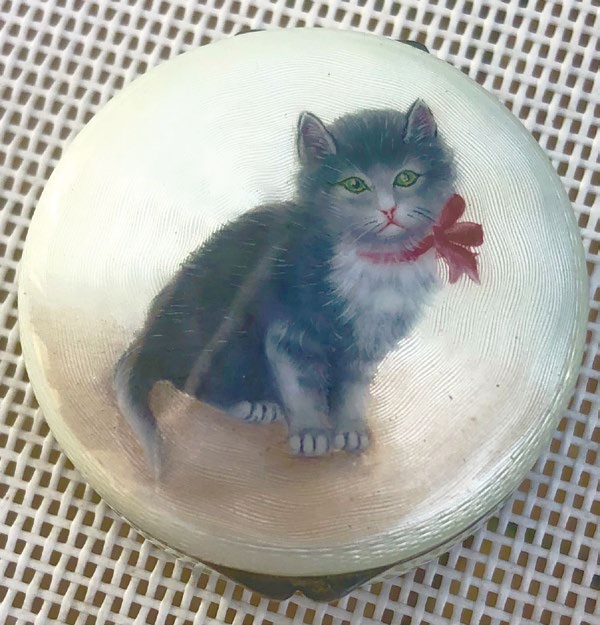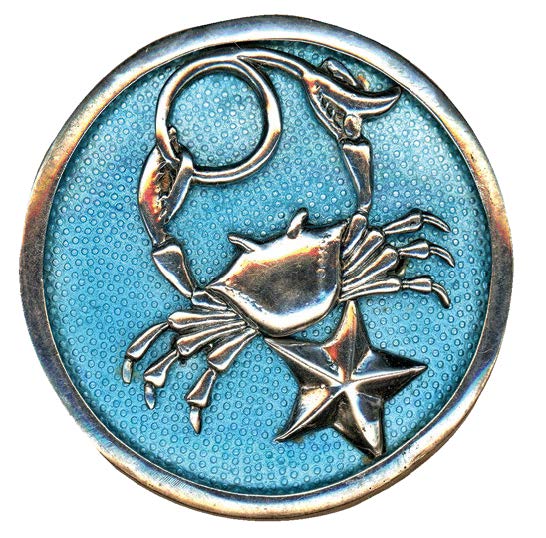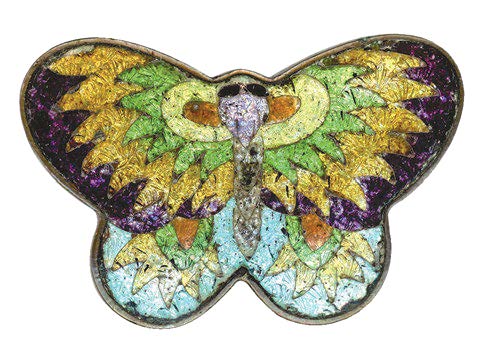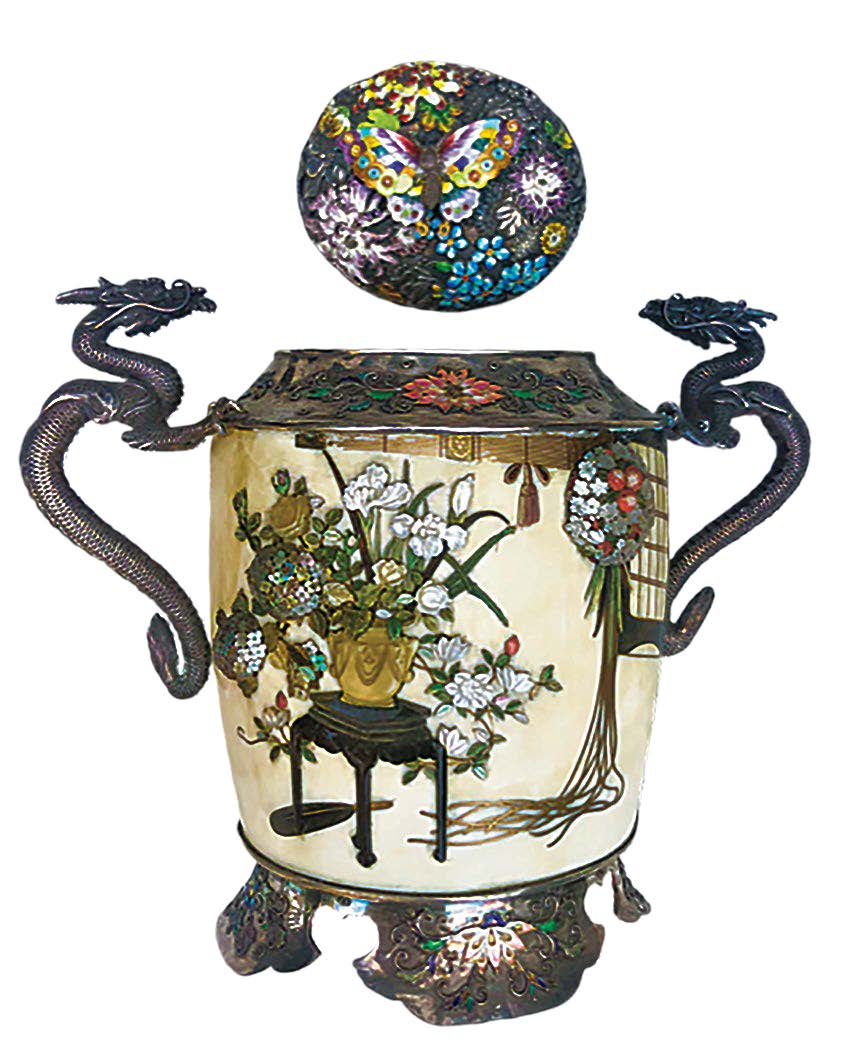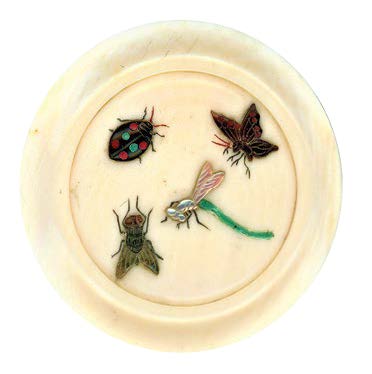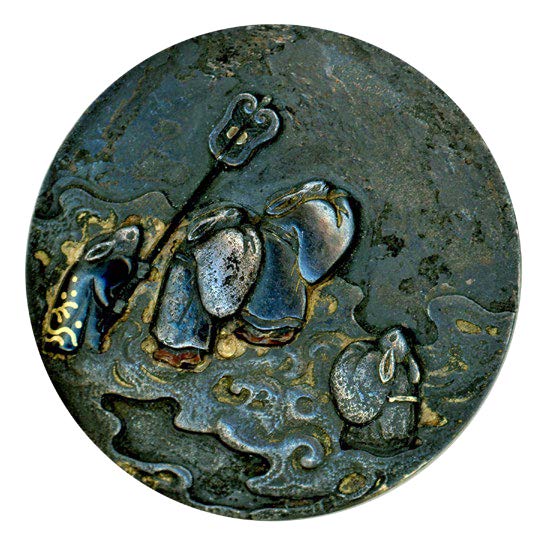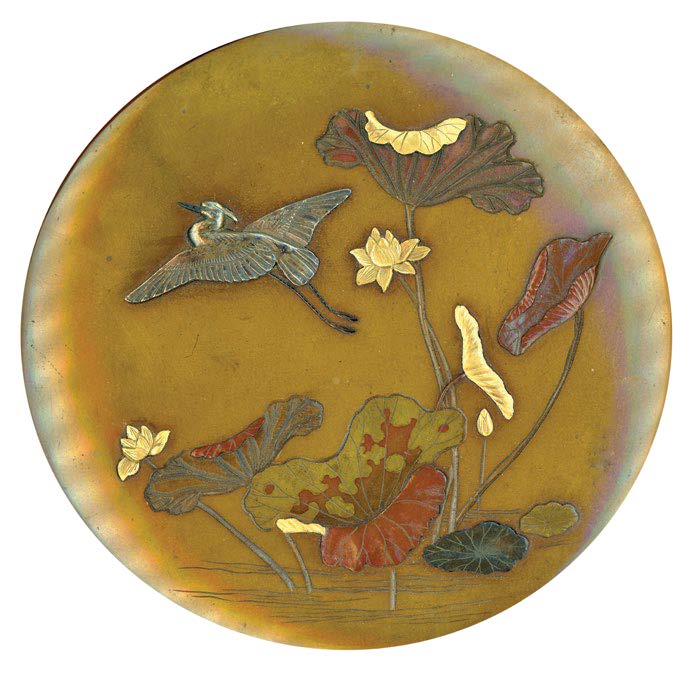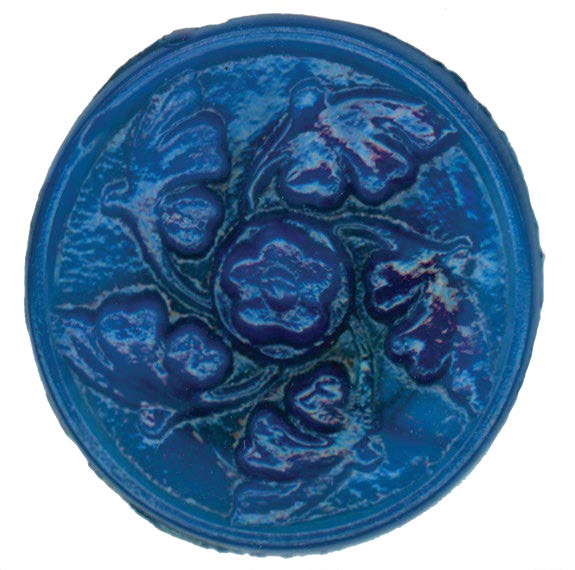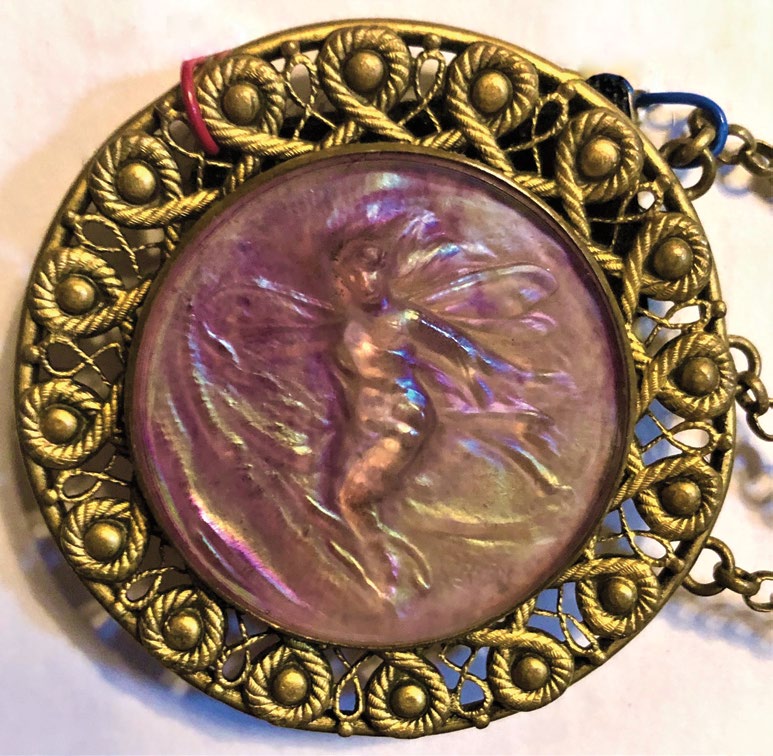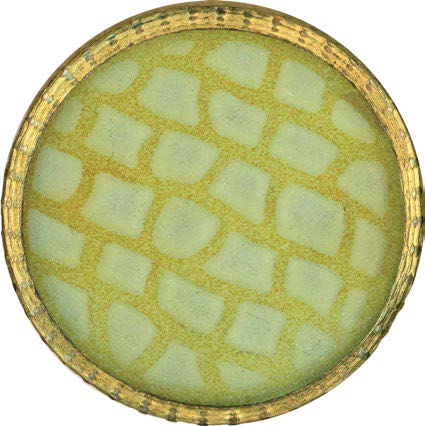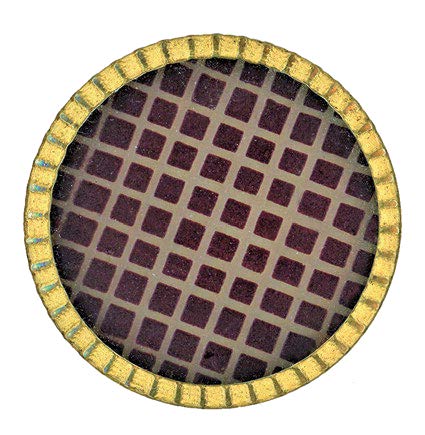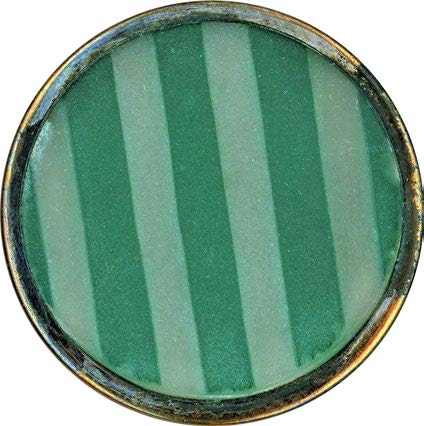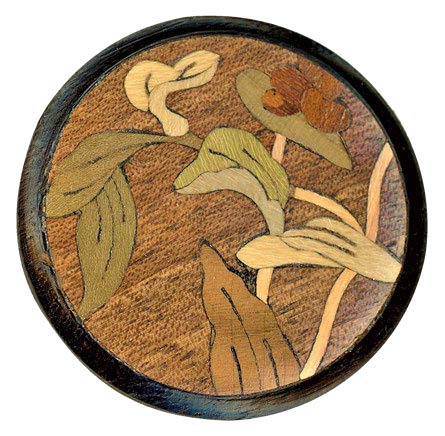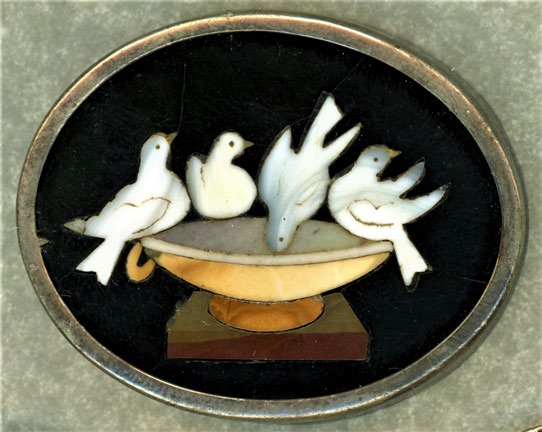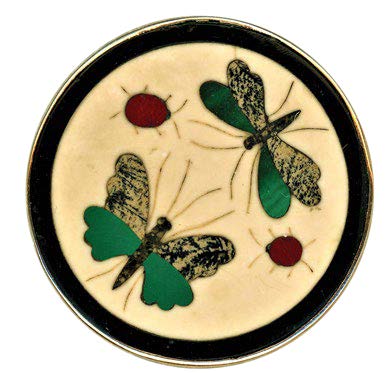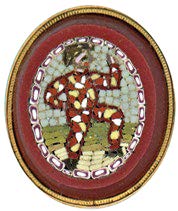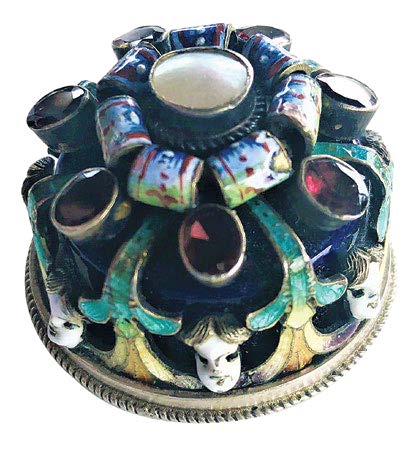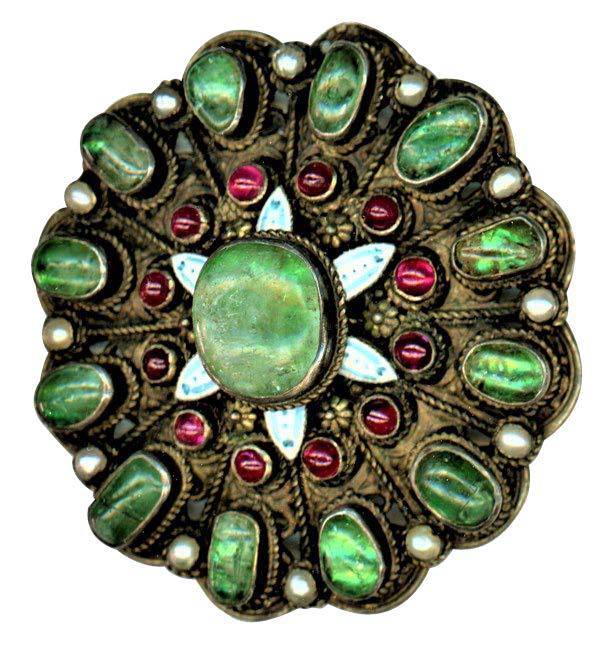Collector's Corner
Button Materials Found Beyond the Button World
Button Materials Found Beyond the Button World
Button collectors are aware of the vast variety of materials used in the creation of buttons throughout history. Just about every material you can think of has been used to make a button – and the same materials and techniques used in buttons were often used in the production of other antiques. History shows us that mankind has always strived to surround themselves with many beautiful objects beyond the buttons that we prize. This article features examples of buttons shown with their antique counterparts, including boxes, vases, furniture and other objects of virtue.
Enamel of the Art Nouveau and Arts & Crafts Period
Enamel of the Art Nouveau and Arts & Crafts Period (approx. 1890-1910) had a distinctive style of its own, heavily influenced by the Czech artist, Alphonse Mucha, known as the “Father” of the Art Nouveau period. The largest collection of Mucha’s works can be seen in the Mucha Trust Collection in the Mucha Museum in Prague. His influence in art he time. I have admired his works probably more than that of any other artist.
Liberty & Co. of London, England is a world-famous famous department store founded in 1875, noted for selling silver, and silver and enamel articles, as well as fabrics, fashions and other luxury items.
Enamel
Guilloché Enamel
A machine called a tour à guillocher is attributed its 18th-century French engineer/ inventor Guillot. His machine would engrave a metal base with any of six different patterns. Enamel would be placed over those designs allowing the engraved metal base to show through.
Gin Bari Enamel
Gin bari enamel work on boxes, buckles and vases, like the buttons, were created with a background of foil, often, but not always showing the cloisons (wire work) in the cloisonné work. Those without cloisons are called ‘hidden cloisonné’.
Ivory | Shibayama
The exquisitely detailed ivory creations of Japanese artisans are prized by collectors. Shibayama is an inlay technique developed in the 18th Century by a Japanese artist for whom the technique was named. It was not until the Meiji period (1868-1913) that the technique became popular.
Japanese Metal Works | Shakudo & Shibuishi
Equally intricate to the shibayama work, shakudo (mixed metals on a bronze base) and shibuichi (mixed metal on a silver base) are also. Typically they depict stories and fables or historical events in Japanese history, often with spiritual references.
Glass
It is no wonder that glass has been used to make buttons. Glass has been a part of man’s life since approximately 3500 B.C. As we all know, many button materials are mounted in metal, but so were many other objects.
Tiffany opened his studio in New York in 1887, creating glass objects into the 1930s.
An extra-large blue molded Tiffany glass button, a smaller realistic Tiffany glass scarab button, and its counterpart, a bronze base and gold iridescent glass vase with several realistic glass scarabs. The vase is signed “Tiffany Studios,” however Tiffany buttons were never signed but came on a black paper with the Tiffany Studios logo and marks. These are further authenticated in the Morse Museum in Winter Park, Florida, which houses the largest collection of Tiffany works in the world. Many others like those shown here are on display at the museum.
Left: A long gilded metal belt with chains between the large and extra-large molded glass plaques depicting a woman in the flowing Art Nouveau style. Each plaque is signed by the famed artist of the period, Gabriel Stalin for the French maker Piel Frères. Paired with the belt in a different color and similar design, is the matching button. Truly exquisite.
Three signed French glass cameo buttons mounted in metal and a glass cameo vase by the company of Émile Gallé, one of the most famous glassmakers of the Art Nouveau and Arts & Crafts periods and later. On the signed vase (15.5″ you can see what Gallé called a “blowout” design, in this case cherries created in high-relief.]
Wood
Wood has been used to make buttons for 100s, if not thousands of years. Gallé was not only famous for his art glass, but also for his inlaid wood work.
Pietra Dura
Developed in Rome, Italy during the 16th Century, Pietra dura is another inlay technique using colorful stones inlaid into a marble or slate base. Most examples we see in objects today were made in the 19th Century.
Mosaic
Finely created micro-mosaic work can be traced back as far as the 3rd Century BC. Like the pietra dura work, the technique was not at the height of its popularity until the mid-19th Century. Micro-mosaics were crafted using inlays of tiny finely cut and smoothed pieces of glass assembled together to create a scene, resulting in an almost painted effect. Some examples have over a thousand miniscule pieces of colored glass.
Tortoiseshell
Tortoiseshell was a highly-used and desirable material of the 19th Century and inlay examples are certainly sought after by button collectors. The extra large silver inlay pictorial of a dog and otter is especially beautiful.
A large high domed silver gilt smuggler’s with a cobalt blue enamel background inner drum and multi-colored enamel design. The base border includes several enamel faces. Above each face is a large oval faceted garnet. The buttons is topped with a large baroque pearl center. all on
silver gilt.
Hungarian jeweled buttons
Hungarian jeweled buttons were created from the 1600s to the mid-19th century and are adorned with various semi-precious stones including meralds, garnets and pearls. They were often trimmed with enamel work. Some rarer examples include a smuggler’s button that would open to a secret compartment to hold snuff (drugs) or other valuables.
Extra large filigreed Silver and Hungarian jewel with an outer border of 12 large oval cabochon emeralds and interspersing baroque pearls along with an inner border of 12 small cabochon garnets and enamel.
Do you love buttons like we do?
Click here to learn more about the wonderful world of buttons and the National Button Society


